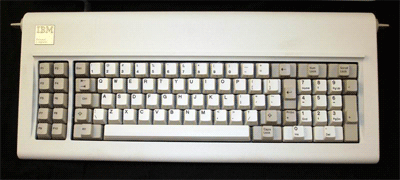Bad Computer Design #1 – stupid key combinations
How do you close a program in Windows? Alt-F4, of course.
How do you switch between documents? Ctrl-F6, stupid!
Who picked these finger-bending choices? To answer this we must go back, back, back in time, to the earliest days of the IBM PC, when the keyboard looked like this:
Yes, only 10 function keys, and all on the left. Also note that the control key was on the center row, where God intended it. Now switching to the next document – Ctrl-F6 – is a simple action of two adjacent keys; closing the program a simple Alt-F4.
The IBM PC was a skunkworks project staffed by engineers; when it became successful, IBM management (I surmise) ordered several changes to bring it in line with the mainstream. Firstly, the arrow keys and numbers shared keys at the right-hand side (as they still do); these were split into separate groups, thus taking up more horizontal room. Secondly, F11 and F12 were added to match the PF1-PF12 keys on 3270 terminals.
These changes made the keyboard too wide, so the function keys were moved above the keyboard where they remain to this day.
At some stage, the control key was moved to the bottom row, and the much-reviled Caps Lock key is now in its place. And so for more than 20 years, we have struggled with finger-stretching combinations like Ctrl-F6 when they were originally very rational placements.
(Just to add to the confusion, Microsoft recently introduced a keyboard with the function keys arranged in 4 groups of 3, not 3 groups of 4.)

Images courtesy of Erik Klein.

Leave a Reply